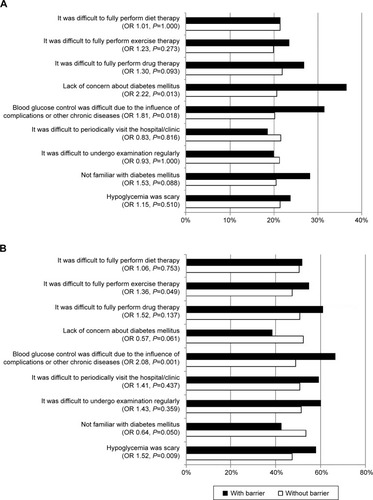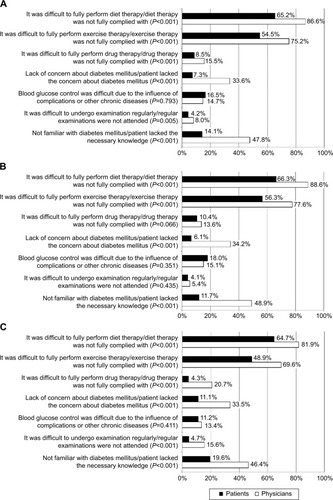Figures & data
Figure 1 Prevalence of complications among patients with or without barriers to blood glucose control. (A) Prevalence of macrovascular complications. (B) Prevalence of microvascular complications.
Abbreviation: OR, odds ratio.

Table 1 Subject background factors
Figure 2 Barrier to blood glucose control (proportion of responders who said the barrier was present; a comparison between physicians and patients). (A) Total, (B) patients who visited hospitals, and (C) patients who visited clinics.

Table 2 Background factors according to the number of discrepancies in response among physicians and patients
Table 3 Background factors according to the presence or absence of barriers to blood glucose control
